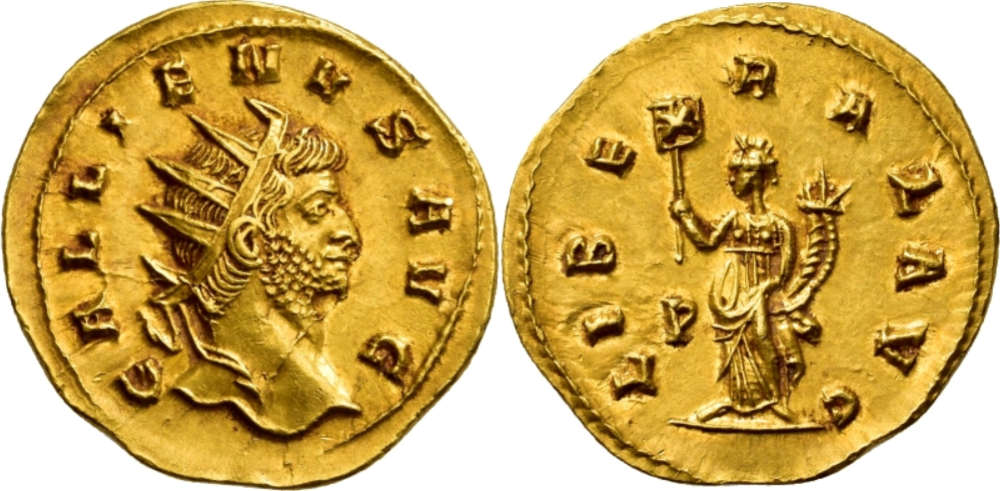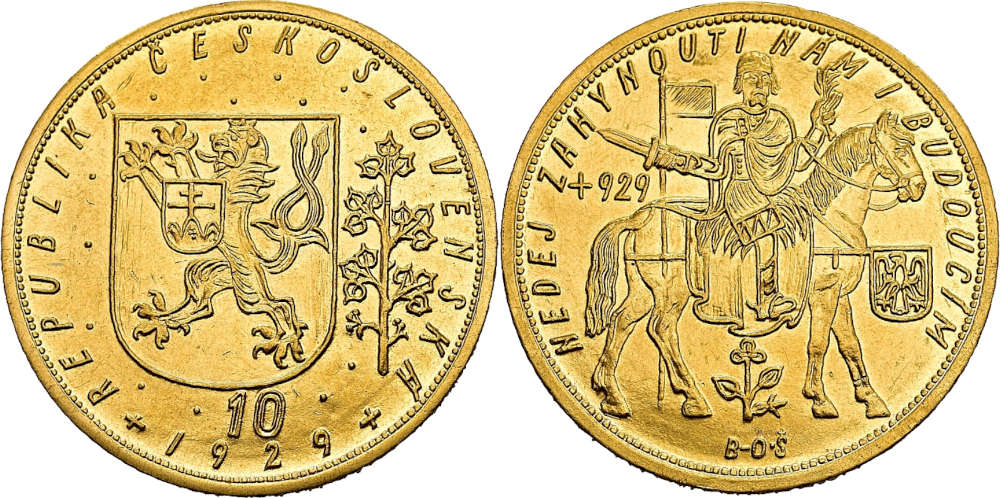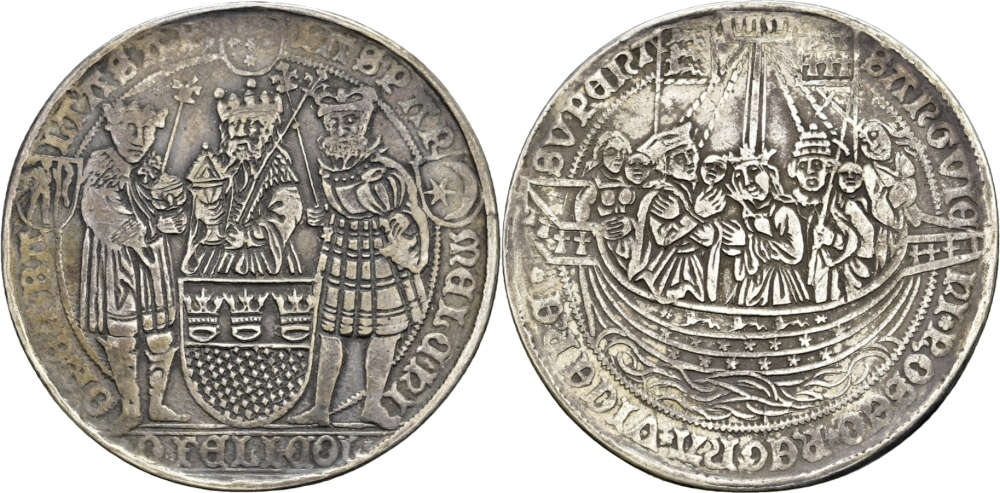Cologne and Linked Territories at Peus
Dr. Busso Peus Nachf.
Auction 435-436
Coins
31 October-2 November 2023
D-Frankfurt a. M.
The autumn auction of Dr. Busso Peus Nachf. extends over three auction days, October 31 to November 2, 2023, which are reflected in two auction catalogues. In addition to the regular auction of coins from antiquity to modern times, this time the collection “Dr. Jürgen Baur, Köln und Nebengebiete” will be offered.

Lot 293: Roman coins. Gallienus. Binio, 260/261, Rome. 2nd known specimen Extremely fine-uncirculated. Estimate: 10,000 EUR.
Auction 435 – Ancient Coins
Day 1, 31 October, traditionally opens with the antiquities (488 lots). The distribution of Greek and Roman coins is roughly equal. The majority of the ancient coins have solid auction provenances, which in the case of no. 301, an Antoninianus of Laelianus, can be traced back to the Fürst Waldeck Collection, auctioned in 1935, and in one case (no. 247) even to the 18th century. Among the “Greeks”, a splendid tetradrachm of Mithradates VI of Pontos (no. 110) and the title piece of the catalogue, a gold Trihemistater of Carthage (no. 177), minted in the midst of the First Punic War, deserve special appreciation. The Roman world is represented with numerous rarities, beginning with the provincial coinage, where two rarissima (nos. 188, 189) from the Burstein Collection, which was auctioned in our house more than 20 years ago, might be of some interest to connoisseurs, along with a magnificent bronze of Cleopatra (no. 192). Among the “Romans”, a pair of gold pieces listed and depicted as unica in Robert Göbl’s Corpus on Gallienus are among the highlights (nos. 292, 293). A solidus of Constantius II from Arelate (no. 317) and one of Magnentius (no. 322) both stand out with good condition and great rarity. Finally, with the rarely offered Byzantine Emperor Alexander, a particularly desirable gold piece is also represented in the last part (no. 361). The antiquities section is completed with a wide range of collector-friendly divided and low-priced lots.

Lot 781: Czechoslovakia. 10 ducats, 1929, Kremnica. Extremely fine/uncirculated. Estimate: 15,000 EUR.
Auction 435 – Foreign Coins
On October 31 in the afternoon the auction of foreign coins of this year’s autumn auction will begin. Among these, a series of Indian and Iranian gold coins, a short selection of Polish coins and a collection of Swiss Shooting Talers are worth mentioning. Most notably, however, are several ducats and multiple ducats of the First Czechoslovak Republic, including a 10x ducat 1929 as a top piece. On the same day, a collection of 130 numbers of the Habsburg hereditary lands from 1486 to 1918 will follow, including coins of Salzburg and Transylvania.

Lot 1340: Saxony, Kingdom. Albert, 1873-1902. Gold medal weighing 21 ducats. 1889, on the 800th anniversary of the House of Wettin. Almost uncirculated. Estimate: 20,000 EUR.
Auction 435 – German Coins
The second day of the auction, November 1, will be opened by the German feudal coins with first of all a collection of talers of the imperial cities of Augsburg, Nuremberg and Regensburg. In Nuremberg alone, there are more than 80 numbers together. Outstanding here is an undated thick Double “City Hall Taler” (1688), which, according to our auction archive (ongoing since 1870), was never auctioned before. In addition, there are numerous talers, medals and gold coins, some of which are very rare all over. Here we would like to point out a Saxon gold medal weighing 21 ducats of 1889 on the 800th anniversary of the House of Wettin by K. Diller at Lauer, Nuremberg. According to the literature, only two copies were struck in gold and, according to our card archive, have not been auctioned since 1870. It is with great certainty a unique opportunity. This is followed by the exceptionally large offer of coins of the German Empire in gold and silver. Top piece among them is the Bavarian 3-Mark piece 1918, on the royal marriage jubilee (J. 54). Modestly taxed combined lots close the offer as usual.

Lot 3279: Cologne, Imperial City. Thick double thaler, (c. 1620), so-called “Epiphany or Ursula coinage”. Very rare. Very fine. Estimate: 3,000 EUR.
Auction 436 – The Collection Dr. Jürgen Baur
Thursday, November 2, is entirely reserved for the collection Dr. Jürgen Baur – Cologne and linked territories. This collection in special catalogue 436 contains nearly 800 coins and medals in gold and silver (and some in copper) of the city and archbishopric of Cologne and the numerous bishoprics that were closely linked to Cologne in the person of the archbishop. The medieval imperial mints in the archbishopric of Cologne form the beginning of the collection, which extends through the medieval and modern coins of the archbishopric and the city of Cologne to medals in the Prussian state. Among the numerous rarities, only an archbishop’s ducat 1750 (no. 3215), a Deutz mint taler 1694 (no. 3186) and a city’s thick double taler (a so called “Ursulataler”) circa 1620 (no. 3279) should be mentioned here. This is followed by the numerous coins and medals with historical reference to Cologne. The bishop’s reign at times far beyond Cologne makes this collection so interesting for any collector, whether interested in Cologne, Westphalia or simply beautiful coins and medals. It should be worth browsing for everyone. Cologne as a theater of war between the powers makes references to Brandenburg-Prussia, Saxony, the Netherlands or England. As a domain for the Wittelsbach family’s sideline (from 1583-1688) the Baur collection is also of value for the collector of Bavarian coins, collectors of the history of the Reformation will find references to the not so clear fight of the confessions. Incidentally, the catalogue also contains some ancient coins, bracteates and talers, which Dr. Baur collected simply for the joy of beautiful coins. The second great passion of the collector was bibliophile numismatic literature. The library contains almost exclusively, partly very rare original prints back to the 17th century. In addition, for the sake of simplicity, the books of catalogue 435 are also auctioned at the end of the day.








